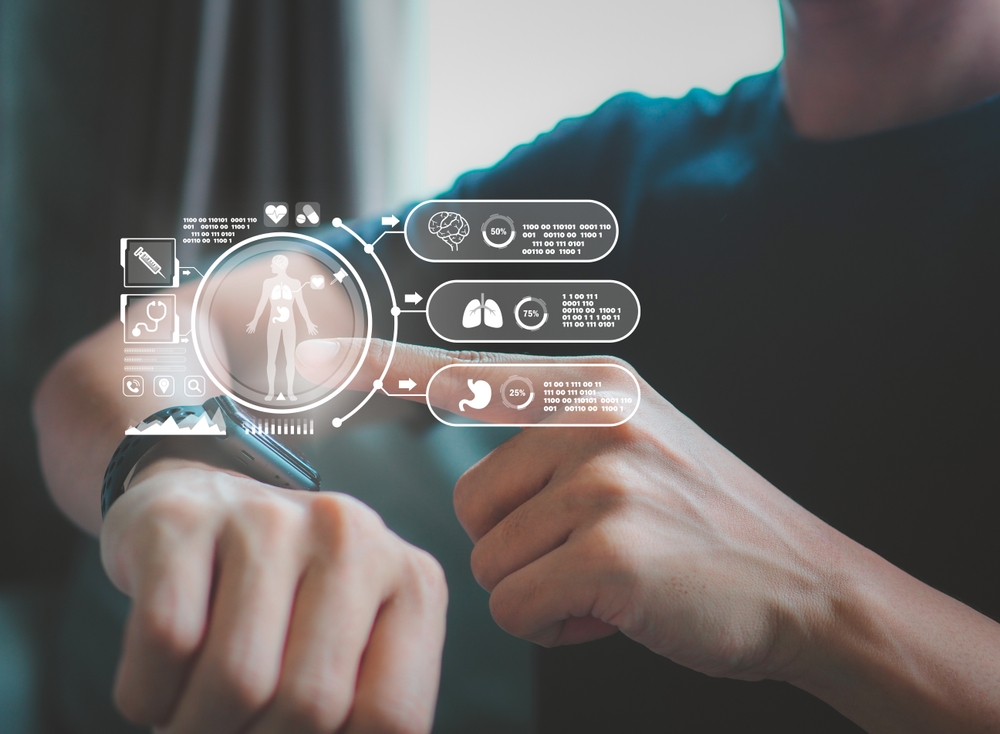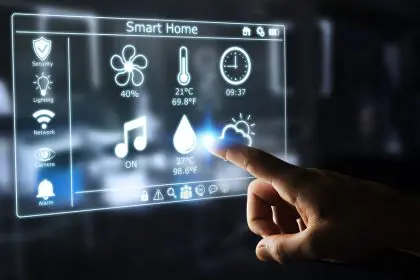Your sweaty gym shirt might seem like nothing more than evidence of a good workout, but cutting-edge technology is transforming that damp fabric into a sophisticated medical laboratory that can diagnose diseases, monitor chronic conditions, and track your health in real-time. What sounds like science fiction is becoming medical reality as researchers develop wearable sensors that can analyze the chemical composition of your sweat with laboratory-level accuracy.
This isn’t just about tracking how much you perspire during exercise. Your sweat contains a complex cocktail of biomarkers that reflect everything from your hydration status and electrolyte balance to blood sugar levels, stress hormones, and even early signs of serious diseases like cystic fibrosis or diabetes.
The technology that’s making this possible represents a complete paradigm shift in how we think about medical testing and health monitoring. Instead of invasive blood draws, expensive lab visits, and waiting days for results, the future of diagnostics might be as simple as wearing a smart shirt that continuously analyzes your body chemistry through your sweat.
Sweat contains a treasure trove of biological information
Your sweat isn’t just water and salt – it’s a complex biological fluid that contains proteins, metabolites, hormones, and other biomarkers that directly reflect what’s happening inside your body. Scientists have identified hundreds of different compounds in human sweat that can provide valuable medical information about everything from organ function to disease states.
The composition of your sweat changes throughout the day and in response to various physiological conditions, creating a dynamic window into your internal health status. Unlike blood tests that provide a snapshot of your condition at a single moment, sweat-based diagnostics can offer continuous monitoring that reveals patterns and trends over time.
Sweat glands are directly connected to your circulatory system, which means that many of the same biomarkers found in blood can also be detected in sweat, often at concentrations that are medically meaningful. This direct connection makes sweat a surprisingly accurate reflection of your internal biochemistry.
The non-invasive nature of sweat collection makes it particularly valuable for continuous health monitoring, especially for conditions that require frequent testing like diabetes management or monitoring recovery from illness or injury.
Smart textiles revolutionize medical monitoring
The integration of biosensors into everyday clothing represents a breakthrough in wearable health technology that goes far beyond simple fitness tracking. These smart textiles contain microscopic sensors woven directly into the fabric that can detect and analyze specific chemical compounds in your sweat as it’s produced.
The sensors work by using various detection methods, including electrochemical analysis, optical sensing, and even miniaturized laboratory techniques that have been shrunk down to fit into flexible, washable fabrics. These technologies can measure everything from pH levels and electrolyte concentrations to specific proteins and hormones.
Advanced signal processing and machine learning algorithms analyze the sensor data in real-time, comparing your current biomarker levels to your personal baseline and established medical reference ranges. This allows the system to detect significant changes that might indicate developing health problems.
The integration with smartphone apps and cloud-based health platforms means that your sweat data can be instantly transmitted to healthcare providers, allowing for remote monitoring and early intervention when concerning patterns are detected.
Diabetes management gets a sweat-powered upgrade
One of the most promising applications of sweat diagnostics is continuous glucose monitoring for people with diabetes. Traditional blood glucose testing requires multiple daily finger pricks, which many patients find painful and inconvenient, leading to poor compliance with monitoring recommendations.
Sweat-based glucose sensors can provide continuous, pain-free monitoring that gives both patients and healthcare providers much more detailed information about blood sugar patterns throughout the day. This enhanced monitoring can lead to better diabetes management and reduced risk of complications.
The correlation between sweat glucose and blood glucose levels has been validated in multiple clinical studies, showing that sweat-based measurements can accurately track blood sugar changes and identify dangerous high or low glucose events before they become medically serious.
Real-time glucose alerts delivered through smartphone notifications can warn users about impending hypoglycemic or hyperglycemic episodes, potentially preventing diabetic emergencies and hospitalizations.
Electrolyte monitoring prevents dangerous imbalances
Electrolyte imbalances can be life-threatening, particularly for athletes, people with certain medical conditions, or those taking medications that affect fluid and mineral balance. Traditional electrolyte testing requires blood draws and laboratory analysis, making frequent monitoring impractical for most people.
Sweat-based electrolyte monitoring can track sodium, potassium, chloride, and other essential minerals in real-time, providing early warning when levels become dangerously high or low. This is particularly valuable for endurance athletes who risk serious health complications from electrolyte depletion during long training sessions or competitions.
The technology can also benefit patients with conditions like kidney disease, heart failure, or adrenal disorders that require careful electrolyte monitoring. Continuous sweat-based monitoring could detect dangerous imbalances before they cause symptoms or complications.
For elderly individuals or those taking multiple medications, sweat-based electrolyte monitoring could provide an early warning system for dehydration and electrolyte disturbances that are common causes of hospitalization in these populations.
Stress hormone tracking reveals hidden health impacts
Chronic stress has been linked to numerous health problems, but measuring stress hormones like cortisol typically requires invasive testing that can’t be done frequently enough to capture daily stress patterns. Sweat-based cortisol monitoring offers a non-invasive way to track stress hormone levels throughout the day.
This continuous stress monitoring could help identify patterns between daily stressors and physiological stress responses, allowing for more targeted stress management interventions. The data could reveal how different activities, environments, or situations affect your stress hormone levels.
For people with stress-related health conditions like hypertension, anxiety disorders, or autoimmune diseases, continuous stress hormone monitoring could provide valuable feedback about the effectiveness of stress reduction techniques and lifestyle modifications.
The technology could also be valuable for shift workers, healthcare professionals, or others in high-stress occupations who need to monitor the physiological impact of their work environment on their health.
Disease detection through sweat biomarkers
Researchers are identifying specific sweat biomarkers that can indicate the presence of various diseases, potentially enabling early detection of conditions like cancer, Parkinson’s disease, and autoimmune disorders. Some of these biomarkers appear in sweat before they become detectable through traditional testing methods.
Cystic fibrosis has long been diagnosed through sweat testing that measures chloride levels, demonstrating that sweat-based diagnostics can be as accurate as traditional laboratory methods for certain conditions. This success has encouraged research into sweat biomarkers for other genetic and acquired diseases.
Inflammatory markers in sweat could potentially detect the early stages of autoimmune diseases, allowing for earlier intervention and better treatment outcomes. The ability to monitor inflammation continuously could also help track treatment effectiveness for existing autoimmune conditions.
Metabolic biomarkers in sweat might reveal early signs of organ dysfunction, particularly liver or kidney problems, before they become apparent through traditional blood tests or cause noticeable symptoms.
Challenges and limitations of sweat diagnostics
While sweat-based diagnostics offer tremendous promise, several technical and practical challenges must be overcome before this technology becomes widely available. Sweat production varies significantly between individuals and can be affected by factors like temperature, humidity, physical activity, and certain medications.
The concentration of biomarkers in sweat is typically much lower than in blood, requiring highly sensitive detection methods that can accurately measure trace amounts of specific compounds. This technical challenge has limited the number of biomarkers that can currently be reliably measured in sweat.
Contamination from skin bacteria, topical products, or environmental pollutants can interfere with sweat analysis, requiring sophisticated filtration and purification systems built into the sensing devices. Ensuring accurate measurements in real-world conditions remains a significant engineering challenge.
The need for calibration and validation against traditional laboratory methods means that sweat-based diagnostics must prove they’re as accurate and reliable as existing testing methods before they can be approved for medical use.
Privacy and data security concerns emerge
The continuous collection of detailed health data through sweat diagnostics raises important questions about privacy, data security, and who has access to this intimate biological information. Unlike traditional medical tests that are conducted in controlled healthcare settings, sweat diagnostics collect data continuously in everyday environments.
The integration with smartphone apps and cloud-based platforms means that highly sensitive health data is being transmitted and stored electronically, creating potential targets for hackers or unauthorized access. Protecting this data requires robust encryption and security measures.
Questions about data ownership and sharing arise when considering whether employers, insurance companies, or other third parties might gain access to continuous health monitoring data. Clear regulations and consent processes will be needed to protect individual privacy rights.
The potential for discrimination based on continuous health monitoring data could affect employment, insurance coverage, or other aspects of life, requiring careful consideration of how this technology is implemented and regulated.
The future of personalized medicine through sweat
As sweat diagnostic technology continues to advance, it promises to enable truly personalized medicine based on continuous, real-time monitoring of individual biomarkers and health patterns. This could revolutionize how we approach disease prevention, treatment monitoring, and health optimization.
The ability to detect health problems before they become symptomatic could enable much earlier interventions that prevent serious diseases or complications. This proactive approach to healthcare could dramatically improve health outcomes while reducing healthcare costs.
Continuous monitoring could also enable much more precise dosing of medications based on real-time biomarker levels, reducing side effects and improving treatment effectiveness. This is particularly valuable for conditions that require careful medication management like diabetes, heart disease, or mental health disorders.
The integration of sweat diagnostics with artificial intelligence and machine learning could identify health patterns and disease risks that aren’t apparent to human analysis, potentially discovering new connections between biomarkers and health outcomes.
From laboratory to laundry basket
The transformation of everyday clothing into sophisticated medical monitoring devices represents one of the most significant advances in healthcare technology since the invention of portable blood glucose meters. While the technology is still in development, early results suggest that your workout clothes might soon provide more health information than a traditional doctor visit.
The convenience and non-invasive nature of sweat-based diagnostics could make continuous health monitoring accessible to millions of people who currently can’t or won’t participate in regular medical testing. This democratization of health monitoring could lead to earlier disease detection and better health outcomes on a population level.
As the technology continues to evolve, the line between medical devices and everyday clothing will continue to blur, creating a future where monitoring your health is as simple as getting dressed in the morning and going about your daily activities.

















